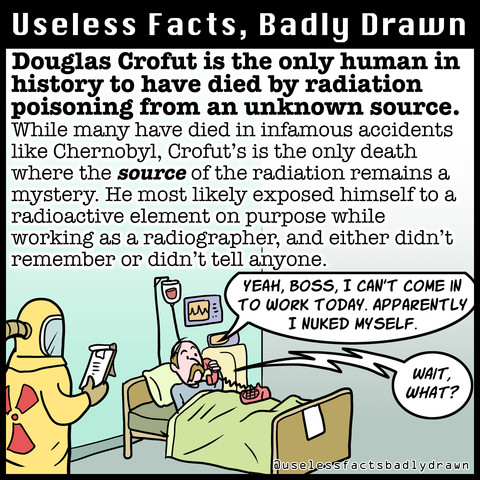Ask A Genius 1239: Radium Watch Girls
Author(s): Rick Rosner and Scott Douglas Jacobsen
Publication (Outlet/Website): Ask A Genius
Publication Date (yyyy/mm/dd): 2025/01/24
Rick Rosner: Let’s talk about jewelry for a moment. In the realm of gold-coated pieces, quality varies widely based on how thick the gold layer is. For instance, a gold wash is the lowest-quality coating—if you buy a piece of jewelry with just a gold wash, that layer will wear off within a decade or two, even with occasional use. Rolled gold, however, has a thicker layer that generally lasts indefinitely. Gold plating itself comes in different thicknesses as well.
Then there’s vermeil, which is gold layered over silver. Because silver is more valuable than ordinary base metals, vermeil is considered more desirable than gold over pot metal—a cheap combination of metals like tin and sometimes lead. Speaking of lead, you’d never want a pot made of pure lead; it’s toxic and can cause certain metals to erode. If your jewelry contains lead, it could eventually degrade. I’ve seen a lot of jewelry in my life—I like jewelry—but most of it is unattractive. That’s partly because designers often struggle to balance beauty with a desire to show off how expensive it is. Sometimes, attempts to display wealth—like covering a piece in diamonds—can overshadow good design.
That’s why costume jewelry matters. It allows for experimentation without the pressure of ostentatious spending. If every piece of jewelry cost, say, $2,500 or even $800, fewer people would buy it, resulting in fewer designs overall. Costume jewelry is more affordable, so manufacturers can produce large quantities. If you make a thousand pieces, maybe 300 of them end up halfway decent, 80 are genuinely good-looking, and 25 qualify as spectacular wearable art—a success rate of about 1 in 40. Volume is essential for achieving those hits. Historically, Rhode Island was a hub for cheap, mass-produced jewelry. Much of it was low-quality, but some was beautiful because they kept churning out new designs, often priced just $5 to $8 from the 1930s to the 1970s. In other words, volume plus talent can yield gems—literally and figuratively.
Of course, with cheap jewelry, you never know exactly what it’s made of. Some manufacturers might have used materials that harmed their workers. This brings to mind the “radium watch girls.” Around the turn of the century—give or take a few years—radium was discovered, and people used its radioactive glow in watch dials to help read the time in the dark. The young women painting these tiny numbers and hands were told to lick their brushes to keep the bristles pointed, unknowingly ingesting radioactive material. Many of them later died from radiation poisoning.
Working with toxic substances is unfortunately common in various fields. Turpentine, used as a paint thinner for oil painting, is poisonous. Over decades, it can severely damage an artist’s health. There was also a case in the 1970s of a man who made incredibly lifelike resin castings of people; the resin ultimately killed him. Chemists and chemistry teachers have shorter-than-average lifespans, as do hairstylists due to prolonged exposure to hair dyes. Even famous movie productions had issues: in the 1950s, while filming near Las Vegas, John Wayne and his cast were exposed to radiation from an atomic bomb test. Many later died of cancer. Wayne himself was also a heavy smoker, so it’s hard to pinpoint a single cause for his illness.
The U.S. military now has compensation programs for individuals exposed to nuclear materials who later died of cancer. Several members of my own family worked with nuclear weapons: my dad was a navigator-bombardier on a nuclear-armed bomber, my stepdad guarded nukes, and my father-in-law did accounting for nuclear weapons. Of the three, two died of cancer, though the one most closely involved—my dad—passed away from Parkinson’s instead. My stepdad developed recurring thyroid cancer, but he was also a big cigar smoker, so it’s tough to say if radiation played a role.
For decades, people in Boulder, Colorado (where we lived) lived just 7.5 miles from Rocky Flats, where nuclear triggers were manufactured. Did that cause additional cancer cases? Possibly—it’s hard to know. Boulder is over 5,000 feet above sea level, which means higher natural radiation due to thinner atmosphere, and the local rock is somewhat radioactive as well. Ultimately, exposure to radiation—whether from atomic tests, nuclear weapons, or the environment—remains a concerning factor in many people’s health.
Last updated May 3, 2025. These terms govern all In Sight Publishing content—past, present, and future—and supersede any prior notices. In Sight Publishing by Scott Douglas Jacobsen is licensed under a Creative Commons BY‑NC‑ND 4.0; © In Sight Publishing by Scott Douglas Jacobsen 2012–Present. All trademarks, performances, databases & branding are owned by their rights holders; no use without permission. Unauthorized copying, modification, framing or public communication is prohibited. External links are not endorsed. Cookies & tracking require consent, and data processing complies with PIPEDA & GDPR; no data from children < 13 (COPPA). Content meets WCAG 2.1 AA under the Accessible Canada Act & is preserved in open archival formats with backups. Excerpts & links require full credit & hyperlink; limited quoting under fair-dealing & fair-use. All content is informational; no liability for errors or omissions: Feedback welcome, and verified errors corrected promptly. For permissions or DMCA notices, email: scott.jacobsen2025@gmail.com. Site use is governed by BC laws; content is “as‑is,” liability limited, users indemnify us; moral, performers’ & database sui generis rights reserved.
#industrialSafety #occupationalHealth #radiationPoisoning #RadiumGirls #RadiumWatch
